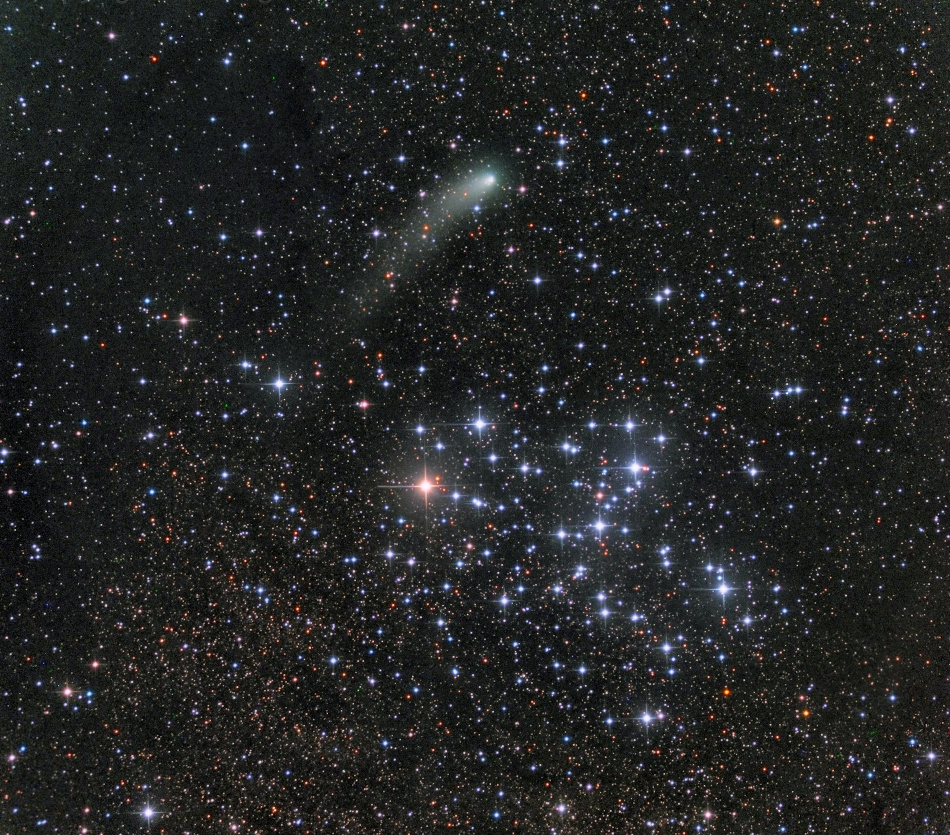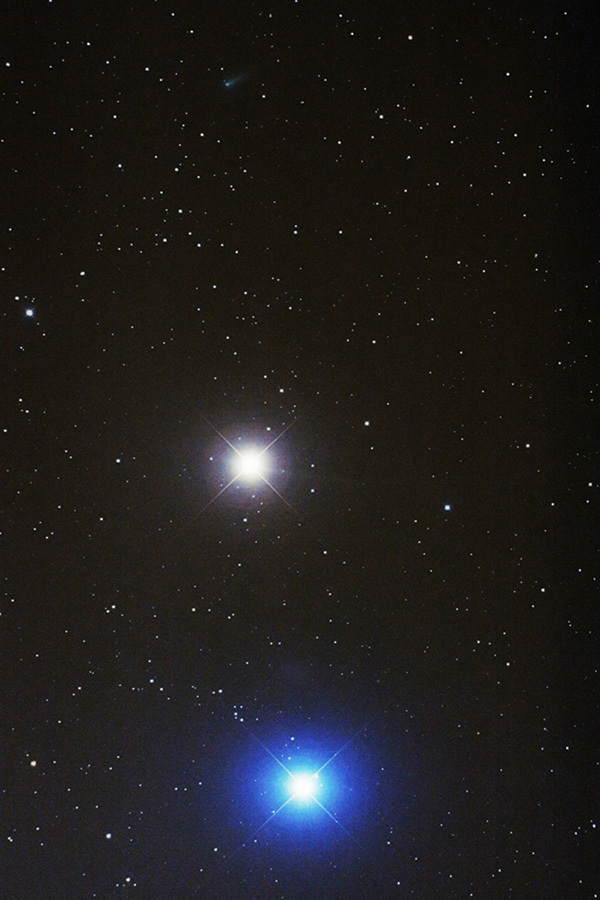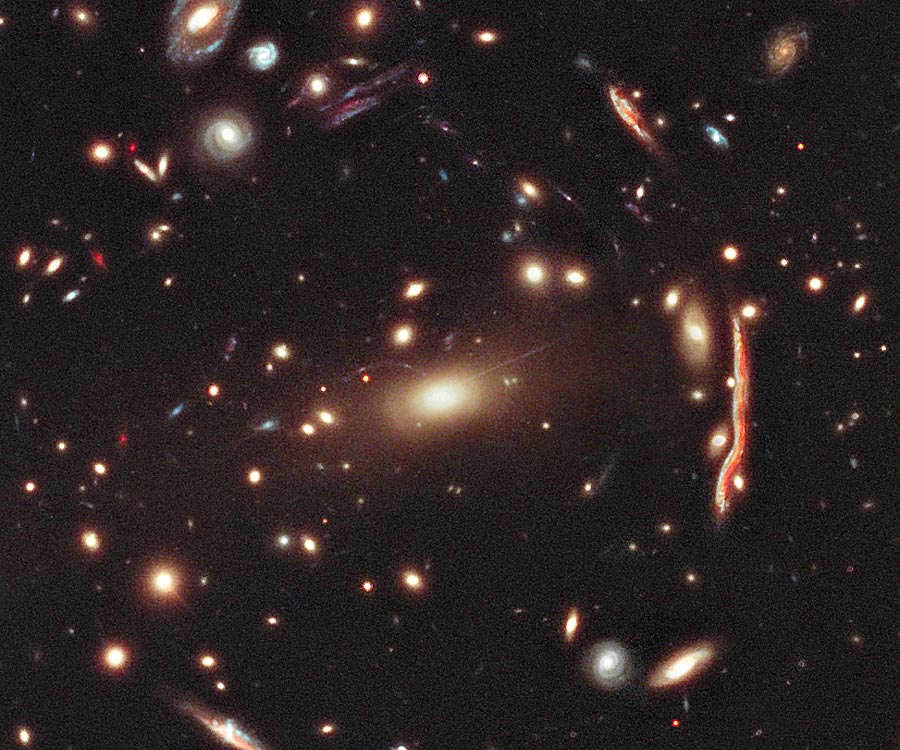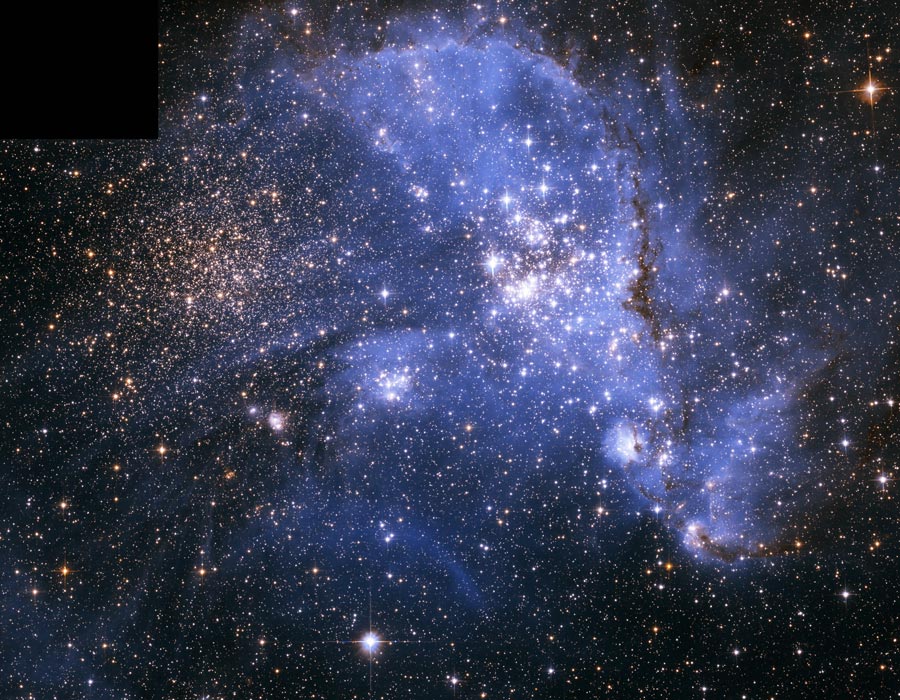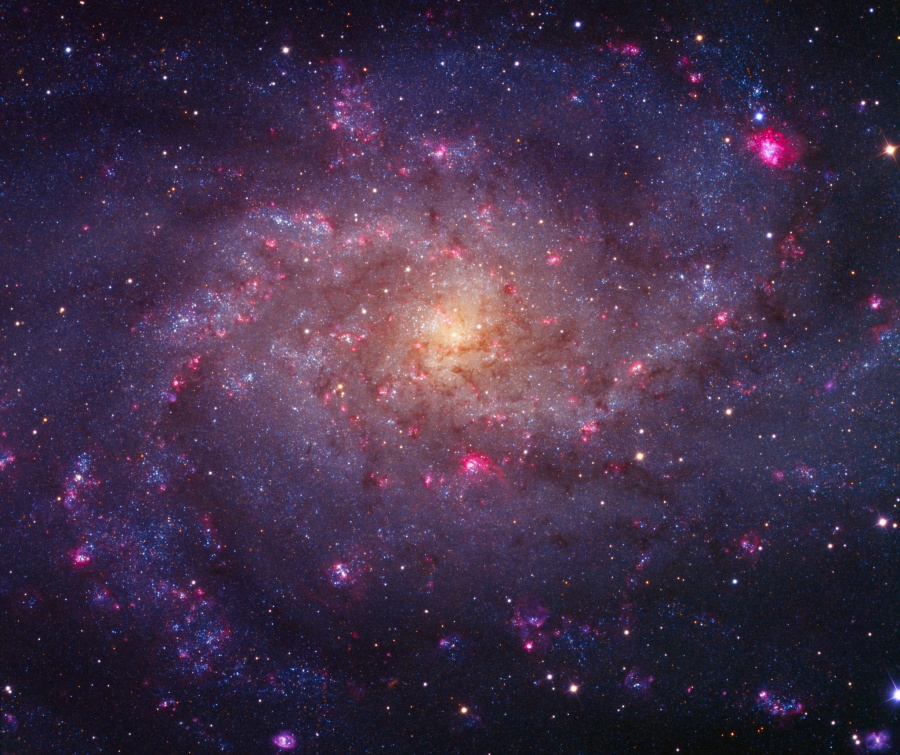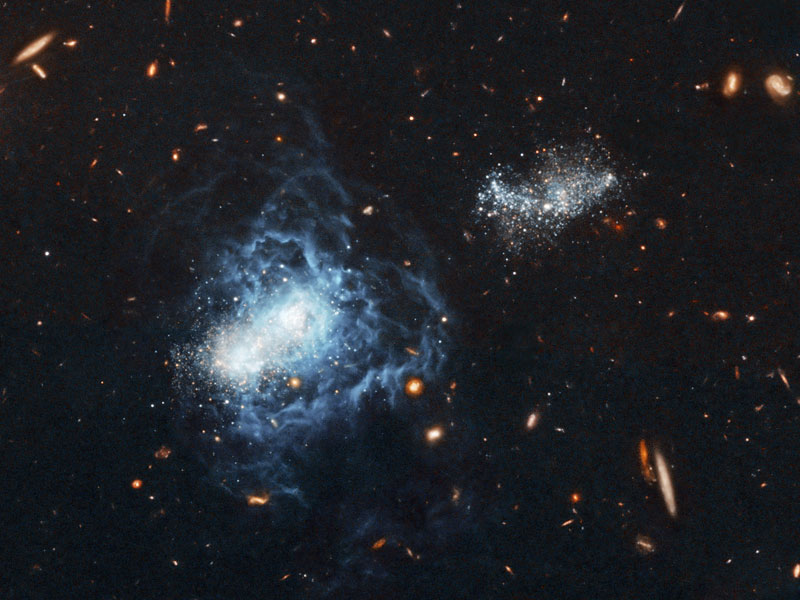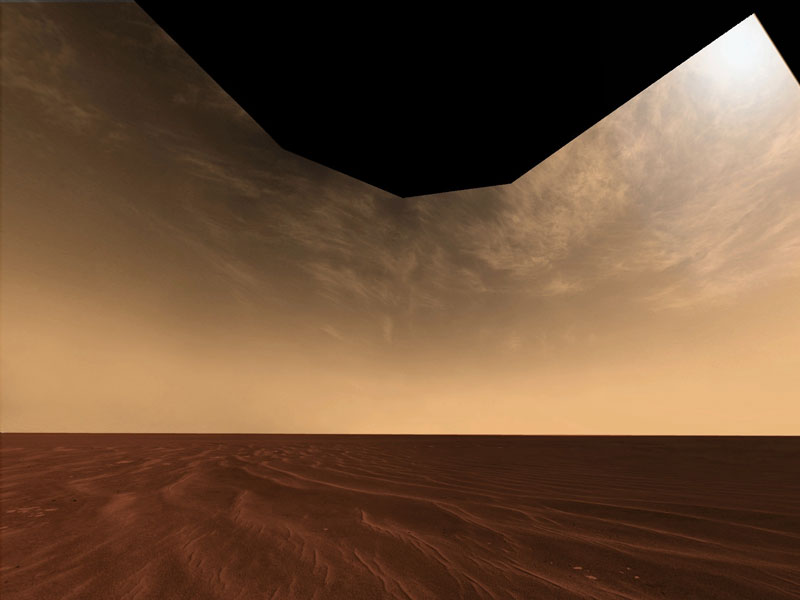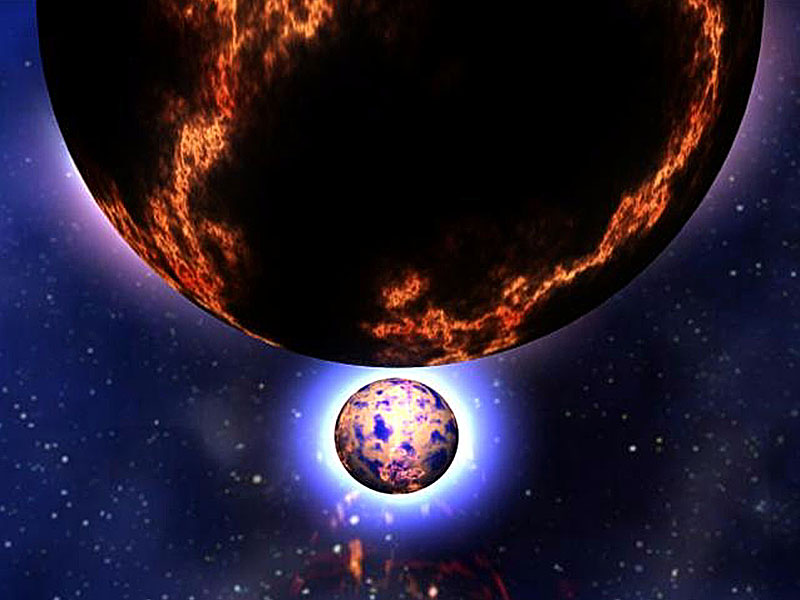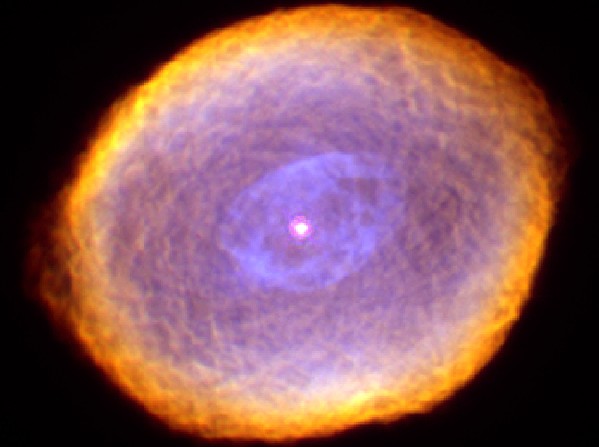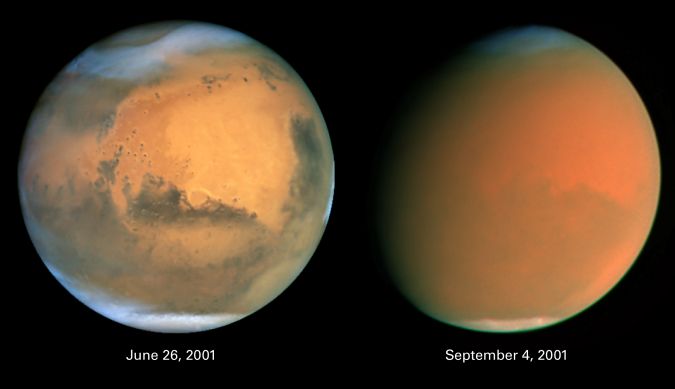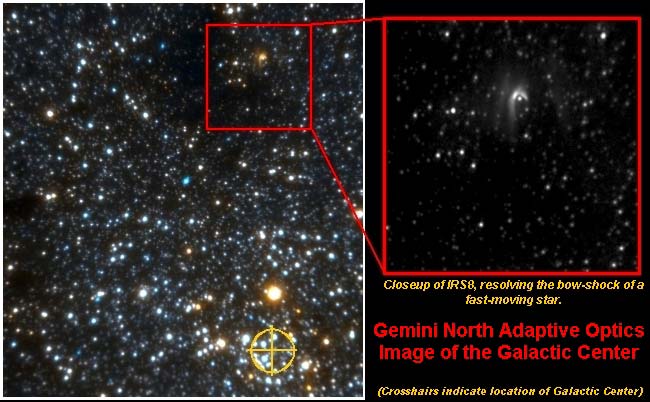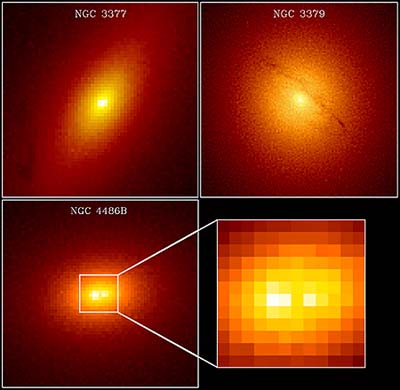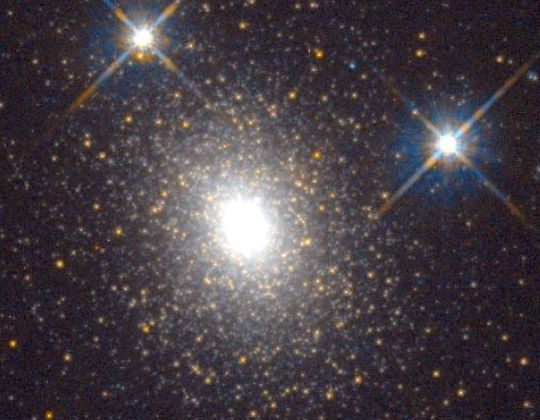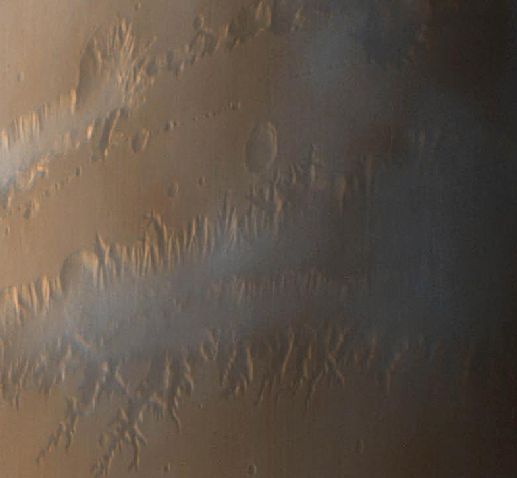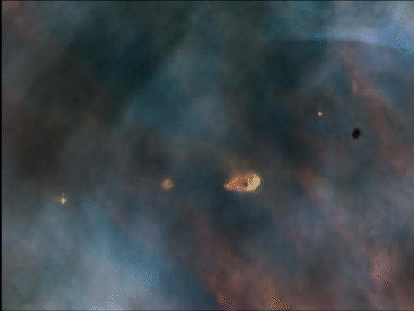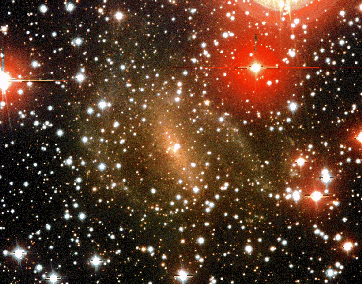| << Previous | Index | Next >> |
2014 This looks like a near miss but the greenish coma and tail of Comet Siding Spring (C/2013 A1) are really 2,000 light-years or so away from the stars of open cluster Messier 6. They do appear close together though, along the same line-of-sight in this gorgeous October 9th skyscape toward the constellation Scorpius. Still, on Sunday, October 19th this comet really will be involved in a near miss, passing within only 139,500 kilometers of planet Mars. That's about 10 times closer than any known comet flyby of planet Earth, and nearly one third the Earth-Moon distance. While an impact with the nucleus is not a threat the comet's dust, moving with a speed of about 56 kilometers per second relative to the Red Planet, and outskirts of its gaseous coma could interact with the thin Martian atmosphere. Of course, the comet's close encounter will be followed intently by spacecraft in Martian orbit and rovers on the surface.
2013 In order top to bottom this celestial snapshot features Comet ISON, planet Mars, and Regulus, alpha star of the constellation Leo, in the same frame. The scene spans about 2 degrees near the eastern horizon in early morning skies of October 15. Closest of the three, the much heralded Comet ISON (C/2012 S1) is by far the faintest at 14 light-minutes (1.7 AU) away. Mars is only slightly farther from our fair planet. About 16.5 light minutes (2 AU) away its normal ruddy color is washed out in the exposure. Regulus outshines both comet and planet from a distance of 75 light-years. Just above Regulus, the very faint smudge of light is actually the Leo I dwarf galaxy, 800,000 light-years away and almost lost in the glare of the bluish hued bright star. Comet ISON is expected to grow brighter, though. How bright is still not clear, but not as bright as a Full Moon in night skies. Estimated to be 1 to 4 kilometers in diameter, ISON's nucleus might substantially survive its very close encounter with the Sun on November 28. If so, the comet will climb back above the eastern horizon in planet Earth's northern hemisphere before dawn in early December.
2012 Sometimes both heaven and Earth erupt. Colorful aurorae erupted unexpectedly earlier this month, with green aurora appearing near the horizon and brilliant bands of red aurora blooming high overhead. A bright Moon lit the foreground of this picturesque scene, while familiar stars could be seen far in the distance. With planning, the careful astrophotographer shot this image mosaic in the field of White Dome Geyser in Yellowstone National Park in the western USA. Sure enough, just after midnight, White Dome erupted -- spraying a stream of water and vapor many meters into the air. Geyser water is heated to steam by scalding magma several kilometers below, and rises through rock cracks to the surface. About half of all known geysers occur in Yellowstone National Park. Although the geomagnetic storm that created these aurorae has since subsided, eruptions of White Dome Geyser continue about every 30 minutes.
2011 It is difficult to hide a galaxy behind a cluster of galaxies. The closer cluster's gravity will act like a huge lens, pulling images of the distant galaxy around the sides and greatly distorting them. This is just the case observed in the above recently released image from the CLASH survey with the Hubble Space Telescope. The cluster MACS J1206.2-0847 is composed of many galaxies and is lensing the image of a yellow-red background galaxy into the huge arc on the right. Careful inspection of the image will reveal at least several other lensed background galaxies -- many appearing as elongated wisps. The foreground cluster can only create such smooth arcs if most of its mass is smoothly distributed dark matter -- and therefore not concentrated in the cluster galaxies visible. Analyzing the positions of these gravitational arcs also gives astronomers a method to estimate the dark matter distribution in galaxy clusters, and infer from that when these huge conglomerations of galaxies began to form.
2010 How and why are all these stars forming? Found among the Small Magellanic Cloud's (SMC's) clusters and nebulae NGC 346 is a star forming region about 200 light-years across, pictured above by the Hubble Space Telescope. A satellite galaxy of the Milky Way, the Small Magellanic Cloud (SMC) is a wonder of the southern sky, a mere 210,000 light-years distant in the constellation of the Toucan (Tucana). Exploring NGC 346, astronomers have identified a population of embryonic stars strung along the dark, intersecting dust lanes visible here on the right. Still collapsing within their natal clouds, the stellar infants' light is reddened by the intervening dust. A small, irregular galaxy, the SMC itself represents a type of galaxy more common in the early Universe. But these small galaxies are thought to be a building blocks for the larger galaxies present today. Within the SMC, stellar nurseries like NGC 346 are also thought to be similar to those found in the early Universe.
2009 Gorgeous spiral galaxy M33 seems to have more than its fair share of bright emission nebulae. In fact, narrow-band and broad-band image data are combined in this beautifully detailed composite to trace the reddish emission nebulae, star forming HII regions, sprawling along loose spiral arms that wind toward the galaxy's core. Historically of great interest to astronomers, M33's giant HII regions are some of the largest known stellar nurseries - sites of the formation of short-lived but very massive stars. Intense ultraviolet radiation from the luminous, massive stars ionizes the surrounding gas and ultimately produces the characteristic red glow. Spanning over 50,000 light-years and a prominent member of the local group of galaxies, M33 is also known as the Triangulum Galaxy. It lies about 3 million light-years distant.
2008 Nineteenth century science fiction author Jules Verne wrote visionary works about Extraordinary Voyages including tales of space flight and the story of a journey From the Earth to the Moon. Fittingly, the European Space Agency's newly developed Automated Transfer Vehicle (ATV), a robotic spacecraft intended to deliver cargo to the International Space Station (ISS) was named in his honor and successfully docked with the ISS earlier this year. When the Jules Verne ATV was undocked and deorbited last month, its safely controlled reentry over the Pacific Ocean was followed by astronomers in order to make detailed comparisons of the actual event with computer models of spacecraft reentry and breakup in the atmosphere. This dramatic image of the fragmenting, 13-ton spacecraft is a high definition video frame recorded from NASA's DC-8 Airborne Laboratory. The observations were part of the joint ESA/NASA Jules Verne Multi-Instrument Aircraft Campaign.
2007 How old is this galaxy? The galaxy on the left, I Zwicky 18, was once thought to be one of the youngest galaxies on record since its bright stars indicated an age of only 500 million years. The galaxy was also intriguing because it resembled galaxies forming in the very early universe, but mysterious since it is so nearby -- only 59 million light years away -- and surrounded by galaxies that are significantly older. Recent images of I Zwicky 18 by the Hubble Space Telescope have helped resolve this mystery, discovering a population of old faint stars intermixed with the bright star population. Therefore I Zwicky 18 is now thought to be just as old as its neighbors, roughly 10 billion years old, but with an intense episode of relative new star formation. Possibly the trigger for this recent episode of bright star formation is the changing gravitational influence of I Zwicky 18's smaller companion galaxy, visible at the upper right.
2006
2005 What causes gamma-ray bursts? The most energetic type of explosions known in the cosmos has been an enigma since discovered over 30 years ago. It now appears that there may not be one unique type of progenitor. Long duration gamma-ray bursts (GRBs) have been localized, over the past few years, to blue regions in the universe rich in star formation. Massive young stars nearing the end of their short lives commonly explode in these regions. Astronomers associate these long duration GRBs, that can last from seconds to minutes, with a type of stellar explosion common in young massive stars. Over the past few months, short duration GRBs have finally been localized and found to occur in different types of regions -- not only blue regions rich in star formation. Many astronomers therefore now theorize that short GRBs, which typically last less than one second, are the result of a different progenitor process than long GRBs. A leading model is that a short GRB will occur when a neutron star either impacts another neutron star or a black hole. Such collisions may occur well after star-forming regions have otherwise burned out. Pictured in the above illustration, two energized neutrons stars finally approach each other in their orbits, a death spiral that might end with a short GRB.
2004 What is creating the strange texture of IC 418? Dubbed the Spirograph Nebula for its resemblance to drawings from a cyclical drawing tool, planetary nebula IC 418 shows patterns that are not well understood. Perhaps they are related to chaotic winds from the variable central star, which changes brightness unpredictably in just a few hours. By contrast, evidence indicates that only a few million years ago, IC 418 was probably a well-understood star similar to our Sun. Only a few thousand years ago, IC 418 was probably a common red giant star. Since running out of nuclear fuel, though, the outer envelope has begun expanding outward leaving a hot remnant core destined to become a white-dwarf star, visible in the image center. The light from the central core excites surrounding atoms in the nebula causing them to glow. IC 418 lies about 2000 light-years away and spans 0.3 light-years across. This false-color image taken from the Hubble Space Telescope reveals the unusual details.
2003 Demonstrating her mastery of a traditional astronomical imaging technique quilter and astronomy enthusiast Judy Ross has produced this spectacular composition of "Astronomy Quilt Piece of the Week". Her year-long effort resulted in an arrangement for a six by seven foot quilt consisting of 52 individual pieces (11 inches by 8 inches), one for each week, which she reports were inspired by her steady diet of APOD's daily offerings. Some of the pieces are based on actual pictures, such as the Hubble Space Telescope's view of planet forming AB Aurigae or Bill Keel's image of the nearby Pinwheel Galaxy. Others, with titles like the Blue Carpet Nebula and Duck Contemplates Black Hole, are from her own creative imaginings.
2002 Almost lost in this cosmic jumble of stars, gas and dust is a faint but definite blue arc -- a stream of young stars whose formation was probably triggered as a small dwarf galaxy was torn apart approaching the giant elliptical galaxy Centaurus A. The 2,000 light-year long arc is revealed in the upper right corner of this processed color digital image, while the dense central region of Centaurus A is near the bottom. Star clusters that make up the blue arc are likely strung out along the incoming trajectory of the small galaxy and are estimated to be only 200-400 million years old. The remarkable result suggests that astronomers have identified a spectacular example of a kind of galactic cannibalism in progress, a process which is believed to contribute to the formation and evolution of large galaxies, including our own Milky Way. Over time, stars and star clusters in this stream should eventually disperse and merge with tumultuous Centaurus A. The image data was recorded with the four meter Blanco telescope at Cerro Tololo Inter-American Observatory.
2001
2000 What's going on near the center of our Galaxy? Glowing across the electromagnetic spectrum, the center of our Milky Way Galaxy is thought to be home to massive stars, rotating gas rings, and a massive black hole. Now the central Galactic zoo just got larger. The 8-meter Gemini North telescope in Hawaii in its first scientific observation has just imaged the Galactic Center and revealed a star only three light years out colliding with gas and dust. The bow shock, similar to that caused by a boat moving through water, appears arrow-shaped and is visible on the upper right of the above photograph taken in representative infrared colors. Gemini's new flexible-mirror technology has imaged this structure, known as IRS8, in finer detail than ever before.
1999 Do all galaxies have black holes at their centers? Although not even a single galaxy has yet been proven to have a central black hole, the list of candidates continues to increase. Results by astronomers using instruments like the Hubble Space Telescope now indicate that most - and possibly even all - large galaxies may harbor one of these dense beasts. In all the galaxies studied, star speeds continue to increase closer the very center. This in itself indicates a center millions of times more massive than our Sun is needed to contain the stars. This mass when combined with the limiting size make the case for the central black holes. Will we ever know for sure?
1998
1997 An icy mist and late afternoon clouds cover much of this section of Valles Marineris on Mars. The Valles Marineris or Mariner Valley is a huge canyon system about 2,000 miles long and up to 5 miles deep. This test image was produced using data from Mars Global Surveyor's wide angle cameras viewing the canyon from a distance of 360-600 miles. Color was synthesized using images recorded through blue and red filters. Mission controllers have recently raised the spacecraft's aerobraking orbit to study the unexpected motion of one of the Surveyor's solar panels.
1996 Are planets common in our galaxy? Strong evidence that the answer is "yes" was provided in this 1994 image made by the Hubble Space Telescope . A close-up of the Orion Nebulae, it reveals what seem to be disks of dust and gas surrounding newly formed stars. These fuzzy blobs, called "proplyds", appear to be infant solar systems in the process of formation. Of the five stars in this field which spans about 0.14 light years, four appear to have associated proplyds - three bright ones and one dark one seen in silhouette against the bright nebula. A more complete survey of 110 stars in the region found 56 with proplyds. If extra-solar planetary systems are common place, are there extra-terrestrial civilizations out there as well?
1995 If you look closely at the center of the above photograph, you will see a spiral galaxy behind the field of stars. Named Dwingeloo 1, this nearby galaxy was only discovered recently (1994) because much of its light was obscured by dust, gas and bright stars of our own Milky Way galaxy. In fact, all the individually discernible stars in the above photograph are in our Galaxy. Dwingeloo 1 turned out to be a large galaxy located only five times as distant as the closest major galaxy - M31.
| << Previous | Index | Next >> |
